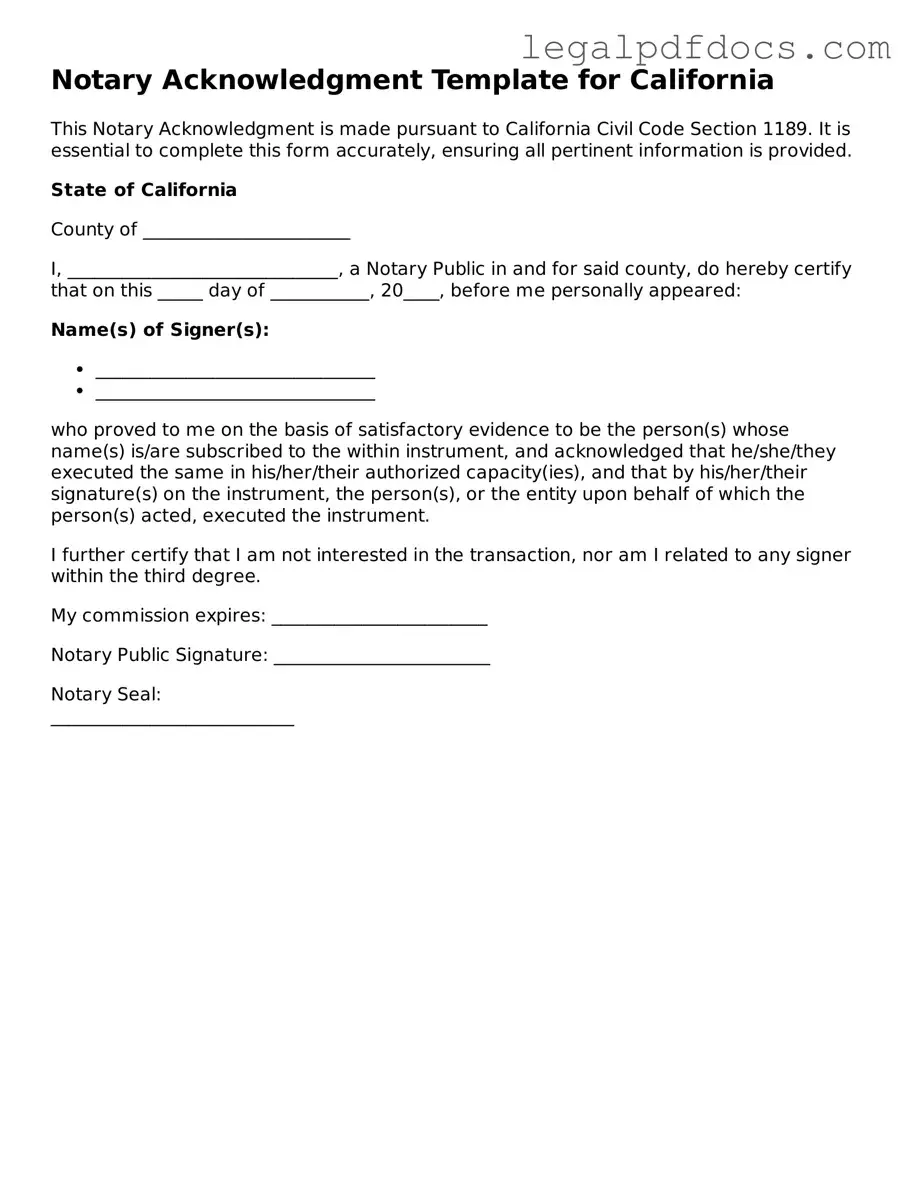The Notary Acknowledgment form plays a crucial role in the realm of legal documentation, serving as a safeguard for the authenticity of signatures on various instruments. This form is essential in confirming that an individual has willingly signed a document in the presence of a notary public, who verifies the signer’s identity and ensures they understand the implications of their signature. Key components of the form typically include the name of the signer, the date of the acknowledgment, and the notary's official seal, which collectively enhance the document's credibility. Furthermore, the form often requires the notary to provide a statement affirming that the signer appeared before them and acknowledged their signature. By utilizing this form, individuals and entities can protect themselves from potential disputes regarding the validity of signatures, thereby facilitating smoother transactions in real estate, contracts, and other legal agreements. Understanding the nuances of the Notary Acknowledgment form is not just beneficial; it is imperative for anyone engaging in formal agreements that require notarization.
